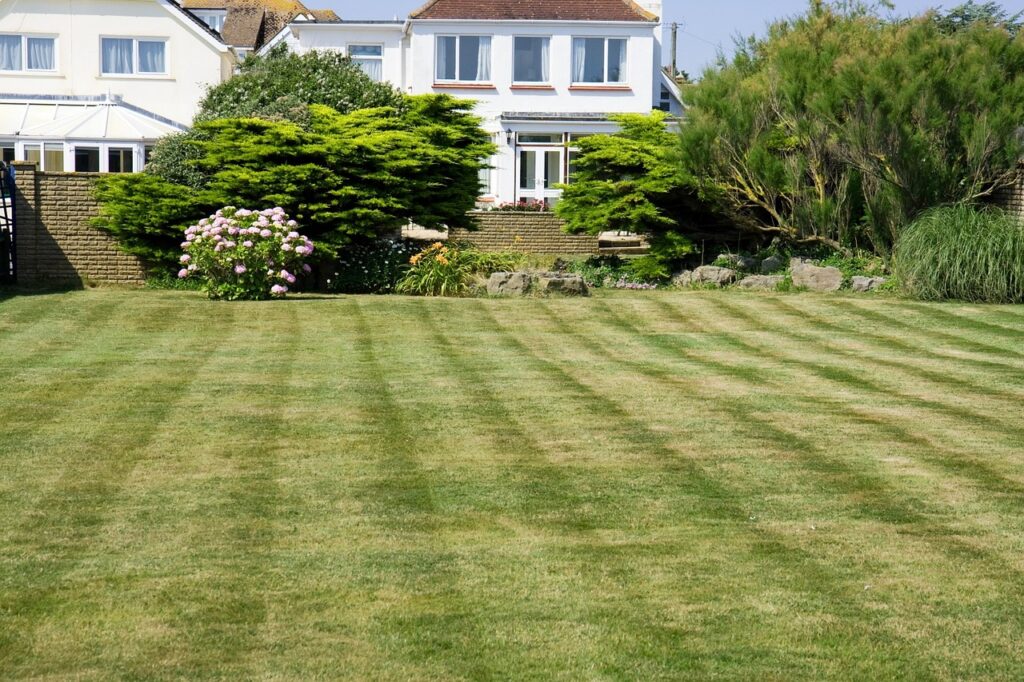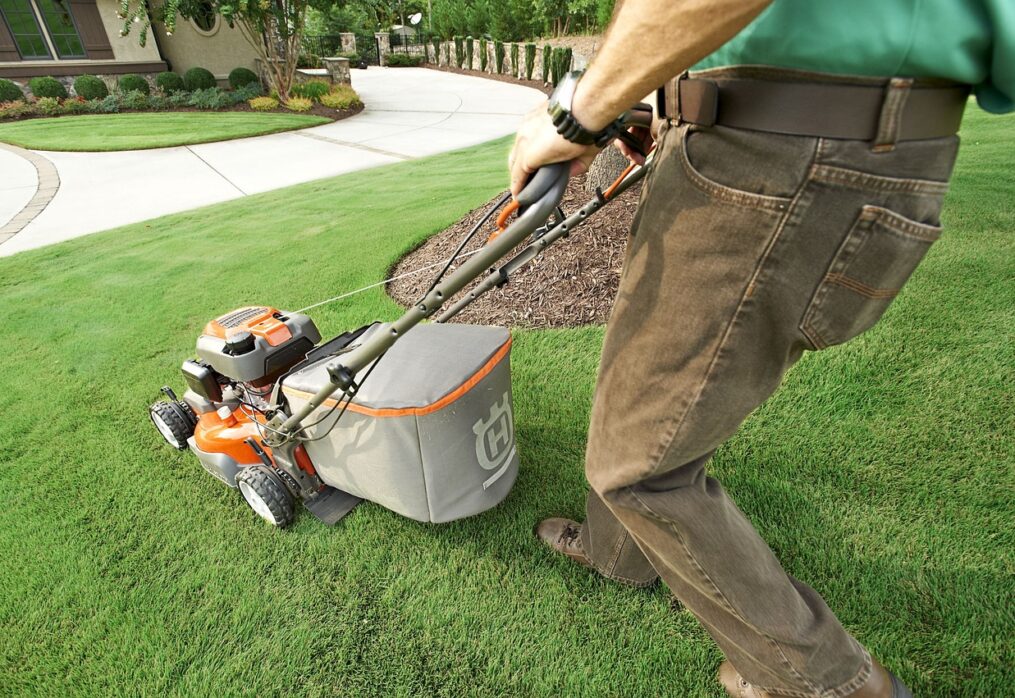Common Mistakes to Avoid When Growing Natural Lawn Grass
Creating a healthy, vibrant natural lawn is a rewarding endeavor, but it’s easy to make mistakes, especially for beginners. Whether you’re new to gardening or transitioning from a traditional lawn, growing natural lawn grass comes with its own set of challenges. From over-watering to selecting the wrong type of grass, these mistakes can stunt the growth of your lawn and cause unnecessary stress. However, by understanding and avoiding common errors, you can ensure your natural lawn thrives in a sustainable, eco-friendly way. (mistakes growing natural lawn grass) In this guide, we will highlight some of the most common mistakes when growing natural lawn grass and offer solutions to help you achieve the lush, green yard you desire. By following these tips, you’ll set yourself up for success and avoid costly setbacks in the long run.
-
Choosing the Wrong Grass Type
One of the biggest mistakes homeowners make is selecting the wrong type of grass for their climate. Different grass species have specific environmental needs, and planting a variety that doesn’t thrive in your region can lead to poor growth and a patchy lawn.
# Solution: To avoid this mistake, it’s crucial to choose grass that is suited to your region’s climate. There are two main types of grasses: cool-season and warm-season grasses.
– Cool-Season Grasses: These grasses grow best in cooler temperatures and are ideal for regions with mild summers and cold winters. Examples include fescue, ryegrass, and Kentucky bluegrass.
– Warm-Season Grasses: These grasses thrive in hot, sunny environments and are perfect for regions with hot summers and mild winters. Common warm-season grasses include Bermuda, zoysia, and buffalo grass. Research your local climate and consult with a gardening expert to determine the best grass type for your lawn. Choosing the right grass will not only help your lawn establish faster but also reduce the need for extra watering and maintenance.
-
Over-Watering
Watering your lawn is essential for grass growth, but over-watering is one of the most common mistakes that can damage your natural lawn. Excessive water can suffocate the roots, promote fungal diseases, and waste valuable resources. Many homeowners are unaware that natural grasses typically require less water than traditional turfgrass varieties.
# Solution: To prevent over-watering, aim for deep, infrequent watering rather than frequent shallow watering. This encourages the grassroots to grow deeper into the soil, making them more drought-tolerant in the long run. Here’s a good rule of thumb: – Water your lawn early in the morning, ideally between 6 AM and 10 AM, to reduce evaporation and prevent fungal growth. – Water deeply, ensuring the soil reaches a depth of about 6 to 8 inches. – Water once or twice a week during dry spells, depending on rainfall and soil type. Additionally, use a rain gauge or moisture sensor to track soil moisture levels, and adjust your watering schedule as needed.
-
Under-Watering
On the flip side, under-watering is also a significant problem when growing natural grass. While natural grasses are more drought-tolerant than traditional varieties, they still need regular watering during dry periods to stay healthy. Underwatering can result in stressed grass that becomes prone to disease, pests, and other issues.
# Solution: Monitor the weather and adjust your watering schedule accordingly. During hot and dry spells, make sure to water your lawn deeply to keep the grass hydrated. Grass that is consistently under-watered will begin to show signs of stress, such as brown patches or wilting. One way to check if your grass needs water is by stepping on it. If the grass doesn’t bounce back and remains flat, it’s time to water. Always aim for a balance between too much and too little water.
-
Improper Mowing
Mowing may seem like a simple task, but improper mowing is a common mistake that can harm your natural lawn. Mowing too short, mowing too frequently, or mowing when the grass is wet can all lead to stressed grass and a weakened lawn.
# Solution: To avoid damage, follow these mowing tips:
– Set the mower height correctly: Different types of grass require different mowing heights. In general, mow your natural lawn at a height of 2.5 to 3.5 inches. For cool-season grasses like fescue, keep them slightly taller, while warm-season grasses like Bermuda can handle shorter mowing.
– Avoid cutting more than one-third: Never remove more than one-third of the grass blade in a single mow. Cutting too much at once can stress the grass and make it more vulnerable to diseases.
– Mow when dry: Mowing wet grass can lead to uneven cuts, clumping, and potential fungal growth. Always mow when the grass is dry, preferably in the late morning or early afternoon.
– Sharpen your mower blades: Dull blades tear the grass instead of cutting it cleanly, leaving ragged edges that can lead to disease and pest problems. Keep your mower blades sharp for a clean, even cut.
-
 Failing to Aerate the Lawn
Failing to Aerate the Lawn
Aeration is the process of creating small holes in the soil to improve air, water, and nutrient penetration. Many homeowners skip aeration, not realizing that compacted soil can prevent grass from developing strong roots. Without proper aeration, grass may struggle to grow, resulting in a thin, weak lawn.
# Solution: Aerate your lawn at least once a year, particularly if you have clay-heavy soil or heavy foot traffic. The best time to aerate depends on the type of grass you have: – For cool-season grasses, aerate in early fall or early spring when the grass is actively growing. – For warm-season grasses, aerate in late spring or early summer during the peak of growth. Aerating helps improve soil structure, reduce thatch buildup, and encourage healthy root growth.
-
Not Fertilizing Properly
Natural grass requires the right nutrients to grow strong and healthy. Failing to fertilize your lawn properly can lead to poor grass health, weak roots, and an increased risk of pests and diseases. On the other hand, over-fertilizing can cause excessive growth, thatch buildup, and environmental pollution.
# Solution: Fertilize your lawn with organic, slow-release fertilizers that provide nutrients over time. Here are some tips for proper fertilization (Fertiliser mistakes growing natural lawn grass):
– Choose the right fertilizer: Use an organic or natural fertilizer to nourish your lawn without the use of harsh chemicals. Compost, manure, and natural lawn food are great options.
– Fertilize at the right time: Apply fertilizer in the early spring for cool-season grasses and late spring or early summer for warm-season grasses.
– Avoid over-fertilizing: Follow the recommended application rates and avoid applying too much fertilizer, as this can lead to nutrient runoff and pollution.
-
Ignoring Pest and Disease Prevention
Pests and diseases can quickly damage your lawn if left unchecked. Common pests like grubs, aphids, and chinch bugs can destroy your natural lawn grass, while diseases such as fungal infections and rust can cause patches of dead grass.
# Solution: To prevent pest and disease problems, focus on maintaining a healthy lawn. A well-established lawn is more resistant to pests and diseases. Here are some steps to take:
– Promote soil health: Healthy soil supports healthy grass. Use compost, mulch, and organic fertilizers to improve soil structure.
– Encourage beneficial insects: Ladybugs, spiders, and other beneficial insects can help control pests naturally.
– Use organic pest control: If pests become a problem, opt for organic treatments like neem oil or diatomaceous earth instead of chemical pesticides.
-
Not Seeding or Overseeding Properly
Over time, your natural lawn may develop bare spots due to wear, pests, or other environmental factors. Not re-seeding these areas can lead to a patchy and unhealthy lawn.
# Solution: Overseed your lawn in the fall (for cool-season grasses) or spring (for warm-season grasses) to fill in any bare spots. This will help your lawn recover and become denser, making it more resilient to weeds and pests.
Conclusion
Growing natural lawn grass offers many benefits, including reduced maintenance, water conservation, and a healthier ecosystem (mistakes growing natural lawn grass). However, as a beginner, it’s easy to make mistakes that can hinder your success. By avoiding common errors like over-watering, improper mowing, and choosing the wrong grass type, you can set your lawn up for success. With the right knowledge and a little patience, your natural lawn can become a beautiful, sustainable, and low-maintenance outdoor space. Stay informed, follow the best practices, and soon you’ll be enjoying a lush, green lawn that thrives naturally.
Contact Us Today!
Ready to transform your lawn? Contact Balaji Nursery today at www.balajinursery.org or call us for a consultation at 9354173113 / 8766234417 Let us help you create the lawn of your dreams!
Last Updated on 1 year ago by Anjali Mehra Ph.D. in Horticulture (Punjab Agricultural University)
- Best Lawn Grass for High-Footfall Religious Places in Punjab - December 29, 2025
- Why Lawn Grass Fails After Installation (Real Indian Case Studies) - December 25, 2025
- Nilgiri Grass vs Korean Grass – Price, Look & Maintenance Compared - December 23, 2025
